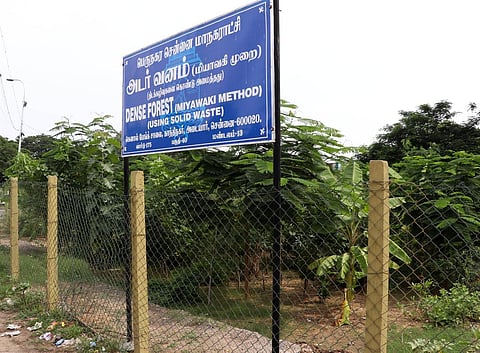

CHENNAI: In times when concrete has taken over much of the living space, sparing only a few blocks for the greens, Chennai corporation’s move to plant trees in Miyawaki style stands out as an excellent example of reforestation.
Eight months ago, the 23,000-square-foot land outside Kotturpuram railway station in the city was an eye sore, filled with construction debris and household waste. Many commuters and residents have complained in the past about the stench emanating from the place.
Following repeated complaints, the civic body cleared up all the encroachments in the surrounding and planted a total of 2,020 trees in Miyawaki style – a Japanese method of planting trees. Invented by a Japanese botanist Akira Miyawaki in the 1980s, this unique method ensures restoration of indigenous ecosystems.
The city corporation, taking inspiration from the method, planted about 40 varieties of native trees, including Java Plum (naval maram), teak (thekku maram), and mahua (iluppai) among others, along the Canal Bunk Road in Kotturpuram. Apart from just giving a pleasant scenery for commuters, the forest is now also home to several birds.
While this is the first such Miyawaki forest in Chennai, the civic body has planted another one at Valasaravakkam. Alby John Varghese, Regional Deputy Commissioner (South) of the Chennai Corporation, said that the idea was to plant native species which could grow in a self-sufficient way. “The method has shown good results and the civic body is set to replicate the method in three more locations in the city,’’ Varghese told TNIE.